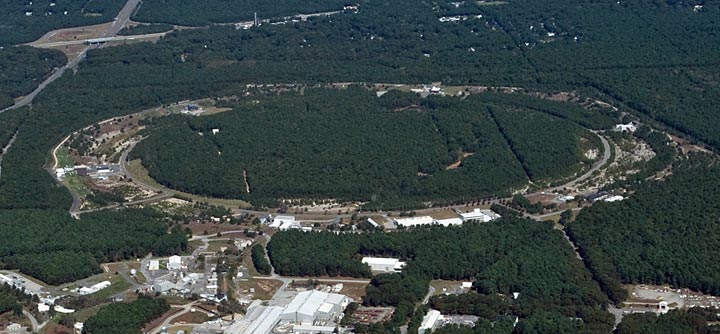Statement on Nuclear Science Advisory Committee 2015 Recommendations for Nuclear Physics Research
October 15, 2015
On October 15, 2015, the U.S. Department of Energy (DOE) and National Science Foundation's (NSF) Nuclear Science Advisory Committee (NSAC) presented its recommendations on a framework to advance the U.S. nuclear physics research program over the next decade. The Committee's highest recommendation is the effective utilization of recent investments in the nation's scientific infrastructure, which were made following NSAC's last major set of recommendations in the 2007 Long Range Plan for Nuclear Science.
"We are especially pleased to see that ... NASC recommends the development and construction of a high-energy, high-luminosity polarized Electron-Ion Collider (EIC) ."
— Doon Gibbs, Director, Brookhaven National Laboratory
These investments, which promise a multitude of new scientific discoveries, include the recent luminosity upgrade of the Relativistic Heavy Ion Collider (RHIC), a U.S. flagship facility for nuclear physics research at DOE's Brookhaven National Laboratory. This upgrade—which vastly increases the rate of particle collisions at RHIC so that scientists can explore in depth the internal structure and properties of the building blocks of matter and the origin of proton spin—was completed under budget and ahead of schedule. These advances in RHIC performance will enable a scientific program with great discovery potential well into the early part of the next decade.
In addition to recommending support for the ongoing research at RHIC and the nation's other major nuclear physics facilities—at the Continuous Electron Beam Accelerator Facility (CEBAF) at Thomas Jefferson National Accelerator Laboratory and the Facility for Rare Isotope Beams (FRIB) at Michigan State University (now under construction)—the NSAC report also recommended support for two new major initiatives for the future.
We are especially pleased to see that, after soliciting broad community input during a series of town hall meetings, NSAC recommends the development and construction of a high-energy, high-luminosity polarized Electron-Ion Collider (EIC) as "the highest priority for new facility construction following the completion of FRIB." An EIC would use electrons to probe the inner structure of protons and nuclear matter directly, offering unprecedented insight into the properties and behavior of gluons—carriers of the strong force that binds nuclear matter and generates nearly all the visible mass in the universe.
We look forward to DOE and NSF adoption of the NSAC plan recommendations, and to working with those agencies and the nuclear physics community to implement these recommendations.
— Doon Gibbs
Director, Brookhaven National Laboratory
2015-11781 | INT/EXT | Newsroom










